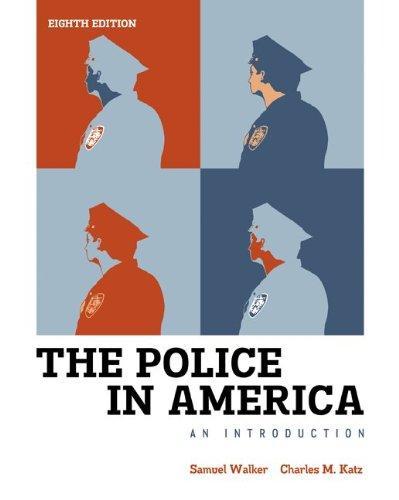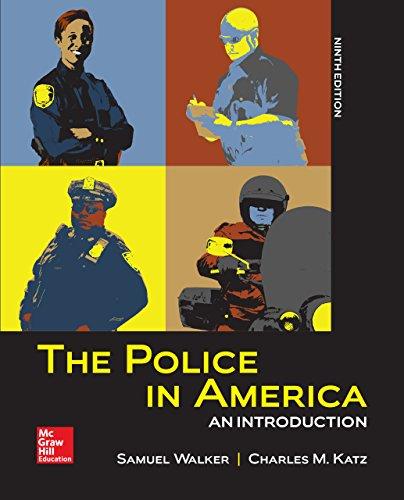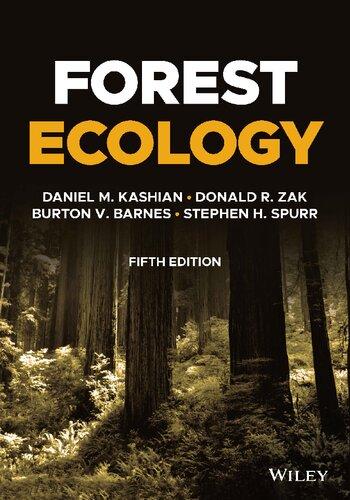Instant digital products (PDF, ePub, MOBI) ready for you
Download now and discover formats that fit your needs...
The Police in America: An Introduction eBook
https://ebookmass.com/product/the-police-in-america-an-introductionebook/
ebookmass.com
The Police in America: An Introduction 8th Edition
https://ebookmass.com/product/the-police-in-america-anintroduction-8th-edition/
ebookmass.com
The Police in America: An Introduction 9th Edition, (Ebook PDF)
https://ebookmass.com/product/the-police-in-america-anintroduction-9th-edition-ebook-pdf/
ebookmass.com
Study Guide for Pharmacology and the Nursing Process E Book 8th Edition, (Ebook PDF)
https://ebookmass.com/product/study-guide-for-pharmacology-and-thenursing-process-e-book-8th-edition-ebook-pdf/
ebookmass.com
Machine Learning and the Internet of Things in Education: Models and Applications John Bush Idoko
https://ebookmass.com/product/machine-learning-and-the-internet-ofthings-in-education-models-and-applications-john-bush-idoko/
ebookmass.com
What Should I Do with My Money? Bryan Kuderna
https://ebookmass.com/product/what-should-i-do-with-my-money-bryankuderna/
ebookmass.com
Central Reserve Police Force (Crpf) Asi/Si/Hc (Steno/Clerk/Min.) Recruitment Exam Guide: According To The Latest Pattern Of The Examination 2024th Edition Rph Editorial Board
https://ebookmass.com/product/central-reserve-police-force-crpf-asisi-hc-steno-clerk-min-recruitment-exam-guide-according-to-the-latestpattern-of-the-examination-2024th-edition-rph-editorial-board/ ebookmass.com
The Leaf Thief Alice Hemming
https://ebookmass.com/product/the-leaf-thief-alice-hemming/
ebookmass.com
Forest Ecology 5th Edition Daniel M. Kashian
https://ebookmass.com/product/forest-ecology-5th-edition-daniel-mkashian/
ebookmass.com
This page is intentionally left blank.
acknowledgments xvii
about the authors xix
part 1 Historical Perspectives 1
chapter 1 Early History (2000 b.c. to a.d. 1800) 2
Overview 3
Redress of Wrongs 4
Retaliation 4
Fines and Punishments 5
Early Codes 5
Babylonian and Sumerian Codes 5
Crime and Sin 6
Roman and Greek Codes 6
The Middle Ages 6
Punishment 7
Capital and Corporal Punishment 7
Deterrence 8
Emergence of Secular Law 9
Early Prisons 10
Workhouses 11
The Age of Enlightenment and Reform 12
Montesquieu and Voltaire: The French Humanists 12
Bentham and the Hedonistic Calculus 13
John Howard 14
Houses of Correction, Workhouses, and Gaols 14
Transportation Systems 16
Deportation to the American Colonies and Australia 16
Hulks: A Sordid Episode 17
Early Cellular Prisons 17
The Maison de Force at Ghent and the Hospice of San Michele 17
William Penn and the “Great Law” 18
The Walnut Street Jail 19
Summary 21 • Key Words 22 •
Review Questions 23 • Application
Case Studies 23 • Endnotes 23
chapter 2 Prisons (1800 to the Present) 26
Overview 27
The Pennsylvania System 28
The Auburn System 29
Discipline at Auburn 29
Prison Competition 30
Prison Rules 31
Change in the Wind 33
Maconochie and Crofton: A New Approach 33
Maconochie and the Indeterminate Sentence 33
Crofton and the Irish System 34
The Reformatory Era (1870 to 1910) 35
Post–Civil War Prisons 37
The Twentieth Century and the Industrial Prison 37
The Period of Transition (1935 to 1960) 39
The Modern Era 41
Internally Sought Reform 42
The Prison Population Boom 43
Summary 44 • Key Words 45 • Review Questions 45 • Application
Case Studies 45 • Endnotes 46
chapter 3
Overview 49
Correctional Ideologies: The Pendulum Swings 48
Conflicting Correctional Ideologies 50
The Punishment Ideology 50
Retribution 50
Deterrence 52
Incapacitation 52
The Effect of Punishment 54
The Rehabilitation Ideology 55
chapter 11 State and Local Prison
Systems 238
Overview 239
State Correctional Institutions: The Core of the System 240
Organization of State Systems 241
Development of State Systems 242
Classification and Assignment in State Prisons 243
Inmates in State Prisons 244
Local Adult City-Operated Prisons 248
Are Prisons “Cruel and Unusual Punishment”? 250
Summary 252 • Key Words 254 •
Review Questions 254 • Application
Case Studies 254 • Endnotes 255
chapter 12 The Federal System 256
Overview 257
The Use of State Facilities 258
Early Federal Prison Facilities 259
The Bureau of Prisons Is Born 259
Early Growth of the Federal Bureau of Prisons 260
Recent Developments 261
Organization and Administration 263
Inmate Populations Explode 264
Community-Based Programs and Contract Facilities 265
A Model Inmate Classification System 266
Unicor: Federal Prison Industries, Inc. 267
Education and Training: Inmates and Staff 268
Federal Female Offenders 270
Community Corrections in the Federal System 271
Changing Population of Federal Institutions 272
Military Offenders 272
Summary 274 • Key Words 275 •
Review Questions 275 • Application
Case Studies 276 • Endnotes 276
chapter 13 Private-Sector Systems 278
Overview 279
The Private Sector in Community Corrections 280
Some Historical Considerations 282
Early History 282
More Recent Developments 283
Private-Sector Treatment Programs 284
Low-Security Custody Programs 285
Surveillance and Control Technologies 286
Correctional Privatization: Issues and Evidence 286
Controversies 288
Assertions 288
Public Interests 289
Illegal Immigration Issues 289
Cost-Savings Issues 289
Violence Issues 290
Staff Recruitment and Turnover 290
Rehabilitation 290
Cost Cutting and Commodities 291
Corruption Issues 291
Summary 292 • Key Words 293 • Review Questions 294 • Application
Case Studies 294 • Endnotes 294
chapter 14 The Death Penalty 296
Overview 297
Origins of the Death Penalty 298
Better Ways to Die? 298
Arbitrary and Infrequent Punishment 299
The Eighth Amendment and the Death Penalty 301
Prosecutor’s Discretion 304
Deterrence of the Death Penalty 304
Public Opinion and the Death Penalty 304
The Controversy Continues 306
The Issue of Equitability 306
Women and the Death Penalty 307
Juveniles and the Death Penalty 307
Justifications 308
The Death Penalty and Terrorism 311
The Cost of the Death Penalty 311
Commitments to Death Row Continue 312
Summary 313 • Key Words 315 •
Review Questions 315 • Application
Case Studies 315 • Endnotes 315 •
Suggested Readings: Part 3 318
chapter 15 Parole and Reentry 320
Overview 321
The Development of Parole 322
The Roots of American Parole 322
Early Practices in Other Nations 322
Parole Comes to the United States 323
Pardon and Parole: Two of the Ways Out of Prison 323
What Is Parole? 325
Parole Administration 327
The Parole Board 327
Parole Release 327
Parole Release Guidelines 328
Parole Conditions 329
Role of the Parole Officer 329
Parole Revocation 330
Parole Remains a Major Segment of Corrections 332
Pardons 333
Reentry: The New Challenge 334
Work-Release Programs 334
Furlough Programs 336
Halfway Houses 336
Reentry Courts 339
Is Parole Effective? 340
Summary 342 • Key Words 344 •
Review Questions 344 • Application
Case Studies 345 • Endnotes 345
part 4
Correctional Clients 347
chapter 16 Inmate and Ex-Offender Rights 348
Overview 349
The Status of the Convicted Offender 350
Basic Inmate Rights 350
Visiting and Community Ties 350
Use of Mail 352
Contraband and Mail 353
Religious Rights in Prison 355
Access to Court and Counsel 355
The Right to Medical Treatment and Care 356
Civil Rights Act “1983” Suits 357
Remedies for Violations of Rights 358
The Legend of the Ex-Con 359
Consequences of a Conviction 359
Stigma 360
Loss of Civil Rights 360
Legal Consequences of a Felony Conviction 361
Right to Work Versus Need to Work 362
Restricted Trades: Barriers to Employment 364
The Problem with a Record 364
Registration of Criminals 365
Registration of Ex-Offenders 365
Expungement as a Response 366
Restoring Offenders’ Rights 368
Summary 368 • Key Words 370 •
Review Questions 370 • Application
Case Studies 370 • Endnotes 370
chapter 17 Male Offenders 374
Overview 375
Prison Population Trends 376
Prisoner Population 377
Criminal History 377
Dangerousness 378
Drugs and Alcohol 378
Education and Work 379
Reasons for the Soaring Prison Populations 380
Prisonization Plays a Role 383
Rape and Sexual Assault in All-Male Institutions 385
The Graying of America’s Male Prisoners 386
Summary 388 • Key Words 389 •
Review Questions 390 • Application
Case Studies 390 • Endnotes 390
chapter 18 Female Offenders 392
Overview 393
Female Crime and Incarceration
Rates 394
A Differential Justice System for Females? 395
Characteristics of Drug-Abusing Female Offenders 397
Females in Jail 399
Females in Prison 400
Female Institutions 403
multiple-choice questions, instructors can choose to either customize each quiz or assign as is, and simply pick the due date.
End of Chapter Questions and Critical Thinking Exercises. These essay-style questions can be assigned and used to measure students’ understanding of the chapter material on a deeper level and challenge their writing skills. The Critical Thinking exercises will require students to compare and contrast, reference newspapers, conduct interviews, as well as look at articles and websites.
Assign discussion questions on the most recent current events videos, articles, and educational media with CJ Search. Designed for quick and easy access in and out of the classroom, our media search tool, CJ Search, organizes current CJ-related videos, news articles and other media from the Internet. Critical-thinking questions have been created for each of these media resources, allowing you to assign current videos to your students for assessment. Help students investigate controversial issues in CJ with Point/CounterPoint Videos. In these video assignments, 2 individuals present opposing cases for or against 21 issues such as marijuana legalization, violent video games, death penalty, three strikes laws, etc. A writing space research assignment prompt and grading rubric for each issue asks the student to take a position on the issue and support it. For each assignment, the pro/con scripts and a list of references are included to assist student research.These videos can also be accessed for in class use from the Multimedia Library.
Help students explore key concepts and issues using Myths and Issues Videos. In these videos, CJ professors around the nation discuss concepts presented in the text providing insight regarding real world application. A short essay writing prompt and grading rubric is provided making these easily assignable within the MyLab. These videos can also be accessed for in class use from the Multimedia Library.
NEW: Foster better writing, all in one place with Writing Space. Better writers make great learners—who perform better in their courses. To help you develop and assess concept mastery and critical thinking through writing, we created the Writing Space. It’s a single place to assign, track, and grade writing assignments, provide writing resources, and exchange meaningful, personalized feedback with students, quickly and easily. And thanks to integration with Turnitin®, Writing Space can check students’ work for improper citation or plagiarism. Two writing assignments per chapter are available, as well as writing assignments for Point/CounterPoint and Myths & Issues videos. Instructors also have the ability to create their own writing assignments, as well as edit and create their own grading rubrics.
Review and assign multimedia assets for your textbook using the Multimedia Library. To help you build assignments, or add an extra engaging element to your lectures, each MyCJLab course comes with a Multimedia Library. Resources include videos such as Myths & Issues, flashcards, simulations, chapter PowerPoints, and summary.
NEW: Keep students on track with the Reporting Dashboard. View, analyze, and report learning outcomes clearly and easily, and get the information you need to keep your students on track throughout the course, with the new Reporting Dashboard. Available via the Gradebook and fully mobile-ready, the Reporting Dashboard presents student performance data.
INSTRUCTOR SUPPLEMENTS
Instructor’s Manual with Test Bank Includes content outlines for classroom discussion, teaching suggestions, and answers to selected end-of-chapter questions from the text; also contains a Word document version of the test bank.
TestGen This computerized test generation system gives you maximum flexibility in creating and administering tests on paper, electronically, or online. It provides state-of-the-art
part 1 Historical Perspectives
Overview
A crucial question in corrections is, “Who are offenders and what shall we do with them?” Part 1 deals with the process by which punishment originated as a private matter between an offending party and the victim but later came to be an official state function. Significant changes over time are examined, starting with 2000 b.c. and continuing through contemporary efforts to construct places of punishment and reform. Behind each of the four major answers to the crucial question lay assumptions about the nature of offenders and what to do with them. Part 1 details these perceptions, assumptions, and answers, as well as corresponding correctional practices and fads that have emerged during the last 4,000 years.
chapter 1
Early History (2000 b.c. to a.d. 1800) chapter 2
Prisons (1800 to the Present)
chapter 3
Correctional Ideologies: The Pendulum Swings chapter 4
The Sentencing and Appeals Process
Objectives
• Summarize the definition, mission, and role of corrections.
• Summarize early responses to crime prior to the development of prisons.
• Describe how secular law emerged.
• Summarize sentencing goals and primary punishment philosophies.
• Outline the development of the prison.
Erich Lessing/Art Resource
Outline
Redress of Wrongs
•Retaliation
•Fines and Punishments
Early Codes
•Babylonian and Sumerian Codes
•Crime and Sin
•Roman and Greek Codes
•The Middle Ages
Punishment
•Capital and Corporal Punishment
•Deterrence
•Emergence of Secular Law
•Early Prisons
•Workhouses
The Age of Enlightenment and Reform
•Montesquieu and Voltaire: The French Humanists
•Bentham and the Hedonistic Calculus
•John Howard
Houses of Correction, Workhouses, and Gaols
Transportation Systems
•Deportation to the American Colonies and Australia
•Hulks: A Sordid Episode
Early Cellular Prisons
•The Maison de Force at Ghent and the Hospice of San Michele
•William Penn and the “Great Law”
•The Walnut Street Jail
Overview
This textbook is not intended to be an in-depth history of corrections nor a dissertation on its legal aspects. It is helpful, however, to know at least a little of the fascinating historical background (legal and social) to gain an improved understanding of the concepts, practices, and operations that we will discuss later and how we got to where corrections is today as we progress into the twenty-first century. In describing this background, we avoid technical jargon to keep misunderstanding to a minimum. Where appropriate, specific individuals and events that have influenced the history of corrections are detailed in the chapter.
It is important to study the growing field of corrections for a variety of reasons. This dynamic field is undergoing rapid, mind-boggling change. In the interest of reducing crime, protecting children, salvaging redeemable offenders, and increasing citizen and society safety, the nation has invested unprecedented amounts of time and money in the correctional system. Between 1972 and 2008, the number of state inmates grew 705 percent before beginning to drop in 2009. The growth of corrections has not been limited to prisons; the number of offenders reentering society as well as the jail and probation populations have never been higher.
“The descent to hell is easy. The gates stand open day and night. But to reclimb the slope and escape to the upper air: this is labor.”
—Virgil, Aeneid, Book 6
key term
Civil death
The status of a living person equivalent in its legal consequences to natural death; loss of all rights and powers as if dead.
and death, as capital punishment. Penal servitude, or civil death, meant that the offender’s property was confiscated in the name of the state and that his wife was declared a widow, eligible to remarry. To society, the criminal sentenced to penal servitude was, in effect, “dead.”
Crime and Sin
key term
“Get right with God” Directive that the offender must make peace with God through repentance and atonement.
Punishment of the individual in the name of the state also included the concept of superstitious revenge. Here crime was entangled with sin, and punishment in the form of wergeld (payment to the victim) or friedensgeld (payment to the state) was not sufficient. If society believed the crime might have offended a divinity, the accused had to undergo a long period of progressively harsher punishment to appease the gods. As time passed, the zone between church law and state law became more blurred, and the concept of personal responsibility for one’s act was combined with the need to “get right with God.”8 The early codes, even the Ten Commandments, were designed to make the offender’s punishment acceptable to both society and God.
Roman and Greek Codes
In the sixth century a.d., Emperor Justinian of Rome wrote his code of laws, one of the most ambitious early efforts to match a desirable amount of punishment with all possible crimes. Roman art of the period depicts the “scales of justice,” a metaphor demanding that the punishment balance the crime. Justinian’s effort, as might be expected, bogged down in the far-flung empire’s morass of administrative details that were required to enforce it. The Code of Justinian did not survive the fall of the Roman Empire, but it left the foundation on which most of the Western world’s legal codes were eventually built.
In Greece, the harsh Code of Draco provided the same penalties for both citizens and slaves, incorporating many of the concepts used in primitive societies (for example, vengeance, outlawry, and blood feuds). The Greeks were the first society to allow any of their citizens to prosecute an offender in the name of the injured party. This clearly illustrates that during the Greek period, public interest and protection of the social order were becoming more important than individual injury and individual vengeance.
The Middle Ages
The Middle Ages was a long period of general social disorder. Vast changes in the social structure and the growing influence of the church on everyday life resulted in a divided system of justice. Reformation was viewed as a process of religious, not secular, redemption. As in early civilizations, the sinner had to pay two debts, one to society and another to God. The “ordeal” was the church’s substitute for a trial by the leadership of the secular group, until the practice was abolished in a.d. 1215. In trials by ordeal, the accused were subjected to impossible, dangerous, or painful tests, in the belief that those who were truly innocent would emerge unscathed, whereas the guilty would suffer agonies and die; this process determined guilt or innocence. The brutality of most trials by ordeal ensured a very high percentage of convictions.
key term
Inquisition
A former Roman Catholic tribunal for the discovery and punishment of heresy; an investigation conducted with little regard for individual rights through a severe questioning.
The church expanded the concept of crime to include some new areas, still reflected in modern codes. During the Middle Ages, sexual activity other than for the purpose of procreation was seen as especially sinful. Sexual offenses usually involved either public or “unnatural” acts, and they provoked horrible punishments, as did heresy and witchcraft. The church justified cruel reprisals as a means of saving the unfortunate sinner from the clutches of Satan. The zealous movement to stamp out heresy brought on the Inquisition and its use of the most vicious tortures imaginable to gain “confessions” and “repentance” from alleged heretics. Thousands upon thousands of persons died at the hands of the Inquisition in Spain and Holland, where these sometimes inhumane methods were the most extensively used. Punishment was viewed not as an end in itself but as the offender’s only hope of pacifying a wrathful God.
The Inquisition was a tribunal, established by the Catholic Church in the Middle Ages, with very wide powers for the suppression of heresy. The tribunal searched out heretics and other offenders rather than waiting for charges to be brought forward. Emperor Frederick II made the Inquisition a formal institution in 1224, and it lasted until 1834. The main contribution of the medieval church to our study of corrections is the concept of free will. This idea assumes that individuals choose their actions, good or bad, and thus can be held fully responsible for them. The religious doctrines of eternal punishment, atonement, and spiritual conversion rest on the assumption that individuals who commit sins could have acted differently if they had chosen to do so.
The early codes and their administration were usually based on the belief that punishment was necessary to avenge the victim, or to satisfy God. In early, small tribal groups and less complex societies, direct compensation to the victim was used in place of revenge to prevent disintegration of the social structure through extended blood feuds. When those groups concentrated their power in a king or similar ruler with another title, the concept of crime as an offense against the victim gave way to the idea that crime (however lowly the victim) was an offense against the state and society in general. In the process, wergeld was replaced by friedensgeld, and the administration of punishment became the responsibility of the king. Concentrating that power also led to a tendency to ignore victims and their losses while concentrating on the crime and the criminal.
PUNISHMENT
Capital and Corporal Punishment
The most common forms of state punishment over the centuries have been death, torture, mutilation, branding, public humiliation, fines, forfeiture of property, banishment, imprisonment, and transportation.9 These acts and numerous variations on them have always symbolized retribution for crimes. (Imprisonment and transportation are relatively modern penal practices and will be discussed in later chapters.)
The death penalty (killing the offender) was the most universal form of punishment among early societies. There was little knowledge of behavior modification and other modern techniques to control violent persons, and often the feared offenders were condemned to death by hanging, crucifixion, burning at the stake, drowning, being drawn and quartered, and any other cruel and unusual method the human mind could conceive. As technology advanced, methods for killing offenders became more sophisticated. In the belief that punishment, especially capital punishment, would act as a deterrent to others, societies carried out executions and lesser punishments in public.
Torture, mutilation, and branding fall in the general category of corporal punishment (any physical pain inflicted short of death). Many tortures were used to extract a “confession” from the accused, often resulting in the death penalty for an innocent person. Mutilation was often used in an attempt to match the crime with an “appropriate” punishment. (A liar’s tongue was ripped out, a rapist’s genitals were removed, and a thief’s hands were cut off.) Branding was still practiced as late as the nineteenth century in many countries, including America. Corporal punishment was considered to be an example and a deterrent to other potential offenders.
The public humiliation of offenders was a popular practice in early America, utilizing such devices as the stocks, the pillory, ducking stools, the brank, and branding. The most significant aspect of those punishments was their public nature. Offenders were placed in the stocks (sitting down, hands and feet fastened into a locked frame) or in the pillory (standing, with head and hands fastened into a locked frame) and then flogged, spat upon, heaped with garbage, and reviled by passersby.
The ducking stool and the brank were used as common public punishments for gossips. The ducking stool was a chair or platform placed at the end of a long lever, allowing the operator on the bank of a stream to dunk the victim. The brank was a birdcage-like
key term
Corporal punishment
Any physical pain inflicted short of death; common methods include crucifixion, whipping, torture, mutilation, branding, and caning.
key term
Brank
A birdcage-like instrument placed on the offender’s head with sharp-edged iron plates that would cut tongues and mouths of the gossipers.
correctional practice 1.1
Caning in the Modern World
Early in the development of criminal law for punishment of offenders, most countries used caning as a punishment. It was also used widely in the schools, military and religious institutions, prisons, and courts. Caning is a corporal punishment that directly inflicts serious and long-lasting medical and psychological damage to the offender.
Caning (sometimes known as “whipping”) utilizes a four-foot-long wooden paddle (of varying widths) to tear the flesh of prisoners with rattan canes and intentionally inflict both severe pain and bodily trauma. The stroke rips off stripes of the offender’s naked buttocks and emulsifies under-the-skin fats. Both blood and fats spurt out of the criminal’s body, immediately followed by discharge of feces and urine. Some offenders, depending on their crime, could receive 21 strokes in some countries.
Until about the end of the 20th century, caning was popular in many English-speaking countries, such as Northern Ireland, the Republic of Ireland, Scotland, Wales, England, and Australia. Most of these countries have abandoned caning since about 1996.
Caning is still practiced in many other countries, and a large percentage of caning countries’ citizens approve of its use. It is a frequent corporal punishment in Malaysia, Singapore, Zimbabwe, Botswana, Tanzania, Trinidad and Tobago, and other jurisdictions.
Caning is generally used as punishment for serious criminal violations such as rape, aggravated rape, incestuous
rape, causing death while attempting to create rape, incest, extortion, gang robbery, possession and control of any dangerous drug, and (in Malaysia) drinking beer if the offender is Muslim. This list varies across countries using caning as punishment and deterrence. In some jurisdictions, prison staff solicit bribes from inmates sentenced to caning and may solicit other bribes from the family of the offender. The bribes are intended to persuade caning officers to miss a stroke, lessening the punishment. Some countries have correctional staff whose main duties are caning of offenders (sometimes up to 60 are caned on a single day) and are paid bonuses for the act of caning as well as the number of strokes inflicted.
Under international human rights law, corporal punishment in any form constitutes torture (or other cruel, degrading, or inhumane punishment), which in all circumstances is prohibited.
SOURCES: Amnesty International (2010). A Blow to Humanity: Torture by Judicial Caning in Malaysia. Published by The International Secretariat, Amnesty International. London, United Kingdom; USATODAY (August 8, 2009), “Muslim model spared from punishment, but just for now,” at malaysia_ N.htm?FORM=ZZNB3.
Correctional Practice original from authors of the textbook.
was placed in dungeons, galleys, or mines to receive punishment, not as punishment in and of itself.
The idea of punishment to repay society and expiate one’s transgressions against God explains in part why most punishments remained cruel and barbarous. Presumably, the hardships of physical torture, social degradation, exile, or financial loss (the four fundamental types of punishment)11 would be rewarded by eternal joy in heaven. Ironically, those punishments did little to halt the spread of crime: “Even in the era when extremely severe punishment was imposed for crimes of minor importance, no evidence can be found to support the view that punitive measures materially curtailed the volume of crime.”12
Early Prisons
What kinds of facilities for imprisonment existed during earlier ages? It is important to examine some aspects of the first institutions as they are related to later correctional practices. Some form of detention for offenders, whether temporary or permanent, has been a social institution from the earliest times. Offenders were, of course, always detained against their will, but the concept of imprisonment as a punishment in and of itself is a fairly recent thought. Formerly, imprisonment was primarily a means of holding the accused until the authorities had decided on his or her real punishment, chosen from the variety just described. Even those condemned to penal servitude in the Roman public works must surely have been kept in some special place at night, regardless of how primitive. Unfortunately, little is known about this form of imprisonment. Most places of confinement were basically cages. Later,

















